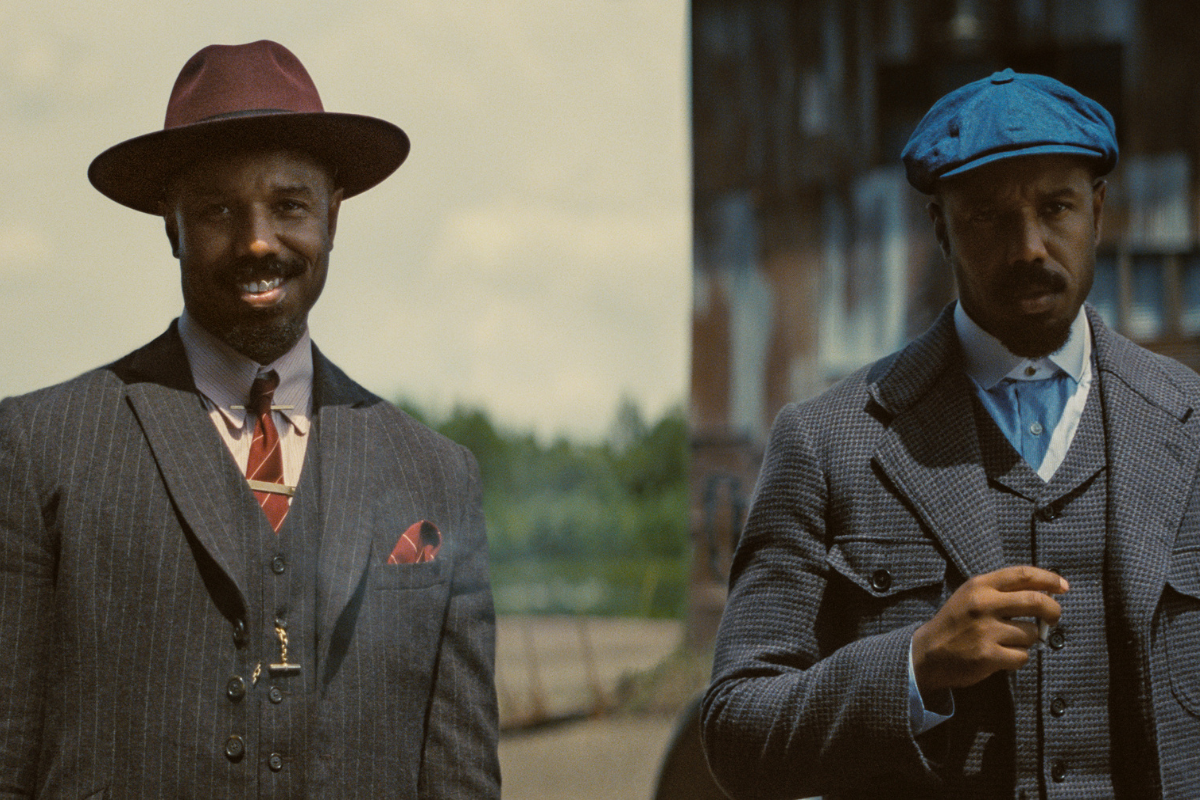Ask the Coach: How Can I Expand My Script?
In this installment of “Ask the Coach” Jenna Avery answers a pre-submitted question about fleshing out a short story into a feature length screenplay. Jenna provides a bounty of examples on expanding character arcs, goals, and story expectations.
Welcome to “Ask the Coach.” As a writing coach, I answer questions from writers about making the work of writing happen, tackling craft, business, and personal questions along the way. (Got a question you’d like answered? Check out the details at the end of the article about how to submit one.)
Today’s question is about fleshing out a story:
“My problem is, I grew up writing short stories, and now I am trying to write a screenplay. I ‘finished’ my script, and if it is true as they say that one page equals a minute of screen time, I have a movie that is roughly a little over 45 minutes. How do I expand my script without making it boring with just a lot of filler?”
Great question. Assuming you’re writing a feature, yes, 45 pages is short. In your shoes, I’d first focus on making sure I have a story with strong enough legs to last a full feature length, then, I’d dig into the specifics. Let’s discuss.
Considerations
Here are some things to think about as you’re troubleshooting. Keep in mind that since I’m not looking at the story with you, I’m feeling around in the dark a bit, so you’ll want to incorporate what seems like the best fit as you read.
1. Are you attempting to adapt a short story into a screenplay?
First, you haven’t mentioned whether you’re adapting a short story into a script. If so, keep in mind that fleshing out a shorter piece, in general, allows you to explore and expand your characters’ backstories and your world-building. It also affords you the opportunity to write more visually and cinematically.
Whether you are or aren’t adapting, you may benefit from doing some research into the adaptation process from short story to film, such as the adaptation of the short story by Ted Chiang, “Story of Your Life,” into the feature film Arrival. Delving into how other screenwriters have successfully transitioned a shorter piece into a longer one will likely prove fruitful for you. You might read the short story, then read the script, then watch the film in order to get a full picture of the distinctions and differences and gain insight into the process. Reading interviews with the screenwriters about the adaptation journey could provide additional perspective and useful tools.
2. Does your central conflict go the distance?
Corey Mandell, an excellent screenwriting instructor and another Script contributor, teaches in his professional workshops and classes that screenwriters must ensure that their central story conflict is strong enough to hold up for the entirety of a feature length film. In other words, it can’t be a simple conflict that’s easily resolved, but one that lends itself to intensifying stakes and consequences and builds to a powerful climax before being resolved.
It’s possible that the reason your story is running short is that it doesn’t actually have the “legs” it needs to last for a full 90-plus minutes. Take a look at your script with an eye toward the intensity of the central conflict and see how well you think it’s working, or not. This may be a place to go back to the drawing board.
3. Are you making it too easy on your characters?
Along similar lines, you may be making it too easy for your characters to achieve their goals. Start by ensuring they have a challenging goal they’re trying to accomplish and is difficult for them to achieve, both because of how they’re getting in their own way and how other characters and circumstances oppose them.
While yes, you don’t want to pad your story with “filler,” as you’ve said, brainstorm how you might make the path from inciting incident to goal fulfillment (or lack of fulfillment) more difficult in ways that deepen the story, challenge your character, and force them to confront themselves again and again.
4. Are you developing sub-goals along the way?
Usually, when a character wants to accomplish something, there are steps they have to take to get there. They can’t simply go straight to the site where the bomb is and disconnect the wire. First, they have figure out if it's a credible threat, perhaps find out who’s behind it, attempt to negotiate, then through traffic or navigate an underground maze of tunnels and through a collapsed section just to get to the bomb, and then still have to figure out how to communicate with the bomb expert who’s across town without a cell signal.
While that’s a more action-oriented example, the same thing applies when we’re looking at other genres as well. For example, in a rom-com, the girl doesn’t just get the guy; first, she has to deal with winning over his mother, who she’s offended, make up for the fact that she ruined his kid’s birthday party by showing up with a dog that eats the cake, or so on.
In other words, there are steps along the way to achieving the ultimate story outcome, and each of these steps can be developed into its own section of the story.
5. Is your character growing over the course of the story?
The most satisfying stories involve a “character growth arc.” This means your character begins in one state of awareness and personal behavior — which usually get in the way of their ability to achieve their story goal — and they’re required to have a major breakthrough in the way they see the world and the way they act in the world before they can succeed in that goal.
As the writer, it’s your job to show us where they begin, how they’re getting in their own way, and to show them failing — repeatedly — before they finally transcend their own shortcomings and become the hero the story needs. Check to make sure your character has grown by the end of the story, and how you’re showing us the path they take to get there.
6. Are you building to an impactful “All Is Lost” moment?
As your audience, we need to fully experience the loss your character feels right along with them at their “All Is Lost” moment just before the climax, sinking into a state of despair, not seeing a way out. That’s when the character has an epiphany: “I’m doing this all wrong.” That’s when they make a new choice about how they’re being in the world, make a significant, resonant, different choice, and succeed. That’s when the breakthrough occurs, and the hero wins.
In order for this moment to truly land and for your audience to buy into the journey your character has undergone, part of your job is to powerfully demonstrate everything the character loses over the middle of your story and how that all culminates for them. We need to see them failing, making mistakes, and things getting worse and worse and worse on their way down into their own cave moment before they break through the other side.
7. Are you employing reversals and changes of fortune?
Your character will have both good and bad experiences along their path to the end of the story. One minute something will be going horribly wrong, and then work out, and vice versa. The heroine will be on the date from hell, but then her date will turn out to be understanding and supportive and she’ll fall for him just enough to be invested, but then she’ll discover he’s only separated from his wife, not actually divorced. This sends her in a new direction.
Again, we’re not looking for “filler” here, but intensifying difficulties that make it harder and more personally challenging for the character.
8. Are you fulfilling genre expectations?
Sometimes the simplest tool is to look at genre expectations. Each genre inhabits its own cultural space and entertains a particular fan base. Generally speaking, that audience comes to a story with certain expectations about what will happen in a story and will feel disappointed without it. For a very simple example, in sci-fi we tend to expect to see some new wow-factor technology demonstrated as part of world-building, whether it’s the ability to transition from body to body in Altered Carbon, or a new kind of tool or weapon, like a lightsaber, type of spaceship technology.
Lest you think I’m suggesting you take a derivative approach to screenwriting, here’s the rub: genre expectations, conventions, and “obligatory scenes” (as described by Shawn Coyne, author of The Story Grid) are the very place to get creative. Audiences come expecting to have their expectations fulfilled, but also want to be surprised and delighted by something new.
Accordingly, you can study the expectations for your genre, make sure they’re in place in your story, and flesh out your story where they may not be, innovating along the way.
***
That’s a Wrap
I hope this helps give you some launching points to explore new ways to flesh out and more fully develop your story. There are many ways into this, including others I’m sure I haven’t covered here. The big idea here is to look for ways to deepen the experience you’re creating for your audience, taking them on a powerful journey through the eyes of your primary characters.
Thanks for submitting your question!
***
Submit your question to be answered anonymously via my online form here or send an email directly to askthecoach@calledtowrite.com. Look for answers to selected questions in my monthly “Ask the Coach” column on the third Thursday of the month. And reach out to me on Twitter to share your thoughts: @JennaAvery.







